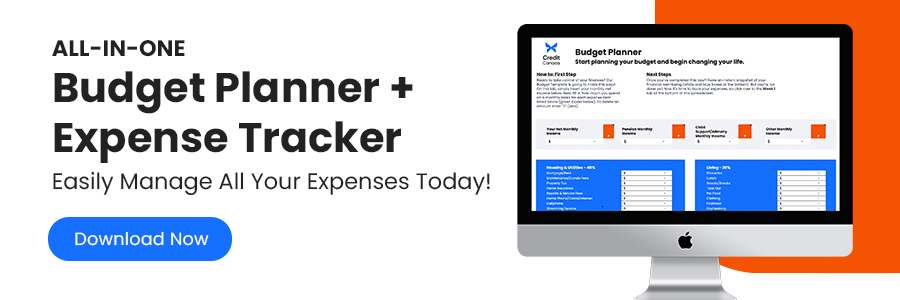Table of Contents
- What Is Overdraft Protection?
- How Does Overdraft Protection Work?
- Advantages of Having Overdraft Protection
- Overdraft Protection and Non-sufficient Funds Fees
- Disadvantages of Overdraft Protection
- Never-ending debt cycle
- Overdraft Interest Charge
- Consequences if You Default
- 5 Ways to Avoid Using an Overdraft
- Say Goodbye to Overdraft Fees!

Overdraft protection is a well-known service provided by banks to cover shortfalls in customers’ accounts. In other words, when there is not enough money in the account to cover a cheque, debit, or withdrawal, if you have overdraft protection, the bank will temporarily lend you the money. Let us take a look at both the advantages and disadvantages of using an overdraft.
What Is Overdraft Protection?
Overdraft protection is an optional service that allows you to overdraw on your bank account balance if you do not have enough money there to cover a financial transaction. The bank lends you the amount by which you are short. For example, if those fancy new shoes you want cost $300, but you only have $200 in your bank account, the bank lends you $100 so you can complete the purchase. Of course, you must then pay back the $100.
How Does Overdraft Protection Work?
To get overdraft protection, you must qualify through a credit application. If you are approved, the bank will set your limit based on your credit worthiness. Once approved, when you go into overdraft, the bank will charge you an overdraft fee, usually $5, plus an applicable overdraft interest charge. You are required to pay back the amount borrowed as soon as possible, because an active bank account cannot be overdrawn for more than 90 days. Banks usually provide overdraft protection either on a monthly, or per use basis.
Advantages of Having Overdraft Protection
An overdraft allows you to withdraw from your account and covers you if you have insufficient funds. If you are shopping using your debit card and do not have enough funds in your account, your purchase could be declined, and you might find yourself in an embarrassing situation; for example, if you are in a crowded grocery line. Say you needed money for an unexpected major expense, such as fixing an oil leak in your car. An overdraft would help to cover the cost in that immediate situation and you could repay it at a later date.
Overdraft Protection and Non-sufficient Funds Fees
If you have automatic withdrawals taken from your account, such as insurance or mortgage payments, and you have run out of funds in your account to cover them all, you could be charged a non-sufficient funds (NSF) fee, which is about $45. If your account balance is too low to cover a cheque, you will be charged $45 or even more. Two or more of these NSFs could result in significant charges. Overdraft protection helps cover the shortfall for purchases and these withdrawals and helps you avoid NSF fees; however, if you reach the limit of your overdraft, you could be declined any more funds and charged fees as well.
Disadvantages of Overdraft Protection
In order to qualify for an overdraft, you must be considered credit worthy by the bank. If your credit is poor you will be denied.
Never-ending debt cycle
Although overdraft protection may help you in the short run to cover your cash shortfall, it can be harmful to your financial well-being in the long run.
In reality, an overdraft is similar to a payday loan, as it is meant as a short-term fix. Although the interest rate on an overdraft is significantly lower than a payday loan, just like a payday loan, any money you deposit into your bank account will automatically be applied to pay off the overdraft. If the amount owing on the overdraft is significant, you may not have enough funds to cover your other expenses, and you may have to continue overdrawing your account.
For example, if you owe $400 on your overdraft, and deposit $1000, then you will only have $600 left to cover your expenses. If you need more than $600, you may have to go back into overdraft. This can turn into a vicious cycle, similar to a payday loan, where you have to put yourself into debt over and over again. If you find yourself in such a situation, contacting a non-profit credit counselling agency such as Credit Canada Debt Solutions, can help you break the debt cycle and get back on your feet again.
Overdraft Interest Charge
As with any loan, whenever your bank account is overdrawn the bank charges you a daily interest rate on the amount owing. The standard interest rate at most banks is 21% annually, which is generally higher than interest on a credit card or even a line of credit. Let’s say you regularly owe $500 each month. Your monthly interest charge will be $8.75. Add the monthly overdraft fee of $5 and you are paying $13.75 in charges. That comes to $165 per year. This is a significant price to pay for what is essentially a convenience.
Consequences if You Default
Don’t forget the bank could cancel your overdraft protection at any time, especially if you default. This means you must pay back the entire balance owing immediately and can no longer draw from the overdraft if you are short. So if you owe $500 and deposit $800 into your account, you would have only $300 left to pay your expenses such as food and housing, and you would no longer be able to draw anything from an overdraft. This could put you in a very difficult position.
5 Ways to Avoid Using an Overdraft
Don’t have a savings account or credit card to link to, and don’t want to pay a $5 monthly fee? (We don’t blame you.) Good news is there are other ways to avoid overdraft fees.
- Use cash or a prepaid debit card to make purchases. This will prevent you from overspending. For example, if you plan to purchase $50 worth of groceries, only spend that amount. If you exceed your limit, then get rid of what you do not immediately need. If something is on sale that you really need, but you had not planned to purchase, such as a good deal on laundry detergent, then leave out the items you can survive without until you have the money to pay for them. Perhaps you can afford that floor cleaner next week.
- Check your bank account regularly. Keep your spending within the limit of what you have available. For example, if you only have $700 in your bank account, ensure your spending does not exceed that amount until your next pay comes in. Be aware of upcoming automatic withdrawals, such as a car payments, and be sure to have enough to cover them. Some banks offer balance alerts through emails, or texts, if your balance goes below a certain threshold.
- Track your spending. Keep a record of what you spend your money on, and how much is left over every day. Awareness of your regular spending means you can better plan for future expenses to ensure you have sufficient income to cover them. You can download Credit Canada’s Budget Planner + Expense Tracker to assist with that.
- Deposit or transfer money into your account immediately following an overdraft withdrawal. While this will not save you from the first overdraft fee, it can save you from significant interest charges in the future.
- Plan for periodic and unexpected expenses. Besides planning for your regular monthly expenses, it's important to save for periodic expenses, such as gifts. If you max out your credit cards at Christmas time you could spend the rest of the year paying them off. Put aside money each month, so you have the money for gifts in December, or better still, purchase gifts little by little throughout the year and save them for Christmas.
Bonus Tip: An unexpected expense, such as a major plumbing repair, is not just an inconvenience but could set you back financially. You know these types of expenses can crop up anytime, so save for them in an emergency fund.
Say Goodbye to Overdraft Fees!
Overdraft protection should be used sparingly and only in desperate situations. Regular reliance on an overdraft will cost you significant interest charges and could put you into financial peril. It's best for you to have sufficient funds in your account to cover your necessary monthly expenses, such as housing, food, and transportation. You should save for periodic expenses, such as clothing or gifts, and for unexpected expenses, such as car and home repairs, or emergency medical costs.
For free debt help, please contact Credit Canada Debt Solutions where you can meet with an accredited Credit Counsellor who will be pleased to help you plan your spending, resolve your debt problems, discuss your debt relief options, and avoid the expense and additional problems of overdrawing your account. All of our counselling is free, confidential, and non-judgmental. Give us a call at 1.800.267.2272. Our Counsellors are standing by to help!
Frequently Asked Questions
Have a question? We are here to help.
What is a Debt Consolidation Program?
A Debt Consolidation Program (DCP) is an arrangement made between your creditors and a non-profit credit counselling agency. Working with a reputable, non-profit credit counselling agency means a certified Credit Counsellor will negotiate with your creditors on your behalf to drop the interest on your unsecured debts, while also rounding up all your unsecured debts into a single, lower monthly payment. In Canada’s provinces, such as Ontario, these debt payment programs lead to faster debt relief!
Can I enter a Debt Consolidation Program with bad credit?
Yes, you can sign up for a DCP even if you have bad credit. Your credit score will not impact your ability to get debt help through a DCP. Bad credit can, however, impact your ability to get a debt consolidation loan.
Do I have to give up my credit cards in a Debt Consolidation Program?
Will Debt Consolidation hurt my credit score?
Most people entering a DCP already have a low credit score. While a DCP could lower your credit score at first, in the long run, if you keep up with the program and make your monthly payments on time as agreed, your credit score will eventually improve.
Can you get out of a Debt Consolidation Program?
Anyone who signs up for a DCP must sign an agreement; however, it's completely voluntary and any time a client wants to leave the Program they can. Once a client has left the Program, they will have to deal with their creditors and collectors directly, and if their Counsellor negotiated interest relief and lower monthly payments, in most cases, these would no longer be an option for the client.








